Tafoni at Pratt’s Rock – Nov 19, 2020
A real geological mystery, and at Pratt’s Rock
The Catskill Geologists
Robert and Johanna Titus
We were invited to speak at the Pratt Museum recently. Our topic was the glacial geology of the Schoharie Creek Valley. After that, a group of us went to Pratt Rock and climbed up the trail there. We took a look at Colonel Pratt’s carvings and continued on to see some nice ice age features. But, along the way, we ran across one of those mysteries we have long struggled with.
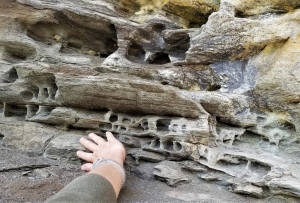
We were first alerted to this particular mystery by Paul Misko, a veteran Catskills hiker. Paul told us of some “very strange structures he had found in Phoenicia. Paul has a real eye for unusual geology, so we paid attention to his “very strange” claim. We saw his Phoenician structures and now we have found more of them at Pratt’s Rock. Take a look at our photo and then climb up the steep incline at Pratts Rock and keep an eye out. Towards the top you will find sizable ledges of sandstone. This is rather commonplace stuff: very typical Catskills bluestone ledges. These ledges are, in essence, the cross sections of a very old streams. It’s, like all rocks in the Catskills, Devonian in age, something a bit less than 400 million years old.
None of this surprised us in the least but that’s where we encountered that mystery. Take another look at our photo and see what you think. See the cluster of closely spaced and very strange cavities just above the hand. Their shapes vary considerably, but they all show a sort of boxy nature and they seem to form an interlocking network. We would like to use the term honeycomb here, but honeycombs show a consistent hexagonal shape; we don’t see that with these. The rock remaining in between these cavities is narrow. The cavities do not penetrate too far into the rock, just a few inches. And there is no reason to think that there is another horizon of these cavities under the ones that are visible. Thus, they appear to be surficial features. Many of these cavities are spaced so close together that they comprise a bigger compound cavity. Whatever it was that formed them was focused.
All in all, this is one of the most puzzling phenomena that we have seen in the Catskills. There is no trouble putting a name on what is here; these structures are called “tafoni.” Each individual cavity is a tafone; lots of them are tafoni. And the terminology keeps getting better; when tafoni occur on cliff faces, as here, then it is called lateral or sidewall tafoni. But, putting a name on something is not the same as understanding it.
What are these features? They seem to be chemical weathering phenomena. Somehow, they appeared on the rock surface and grew slowly into their observed shapes, but exactly how? And, also, how is it that they grow in size until they abut each other but do not grow into each other? How do they grow in size without intersecting? Those are very puzzling questions and just naming these things does not provide answers.
Tafoni have been weakly associated with poorly defined stratification on the sides of cliffs and that is the case here: sort of. But that still leaves a lot unsaid. Why does this “association” occur? What are the specifics? Salt is commonly cited as an agent in tafoni development. They are sometimes found on coastal outcroppings, splashed by ocean waves. But there is certainly no source of salt here on a sandstone cliff in Prattsville, and certainly no waves. And, why do only a few Catskill Cliffs display these? That begs the question: what exactly is different about his cliff? Why don’t all cliffs have tafoni? Why isn’t it that none of them do? There must be something here, right in front of our eyes, which we have missed. This is the sort of thing that makes science so much fun.
Do you have any ideas or questions? Have you seen tafoni somewhere? Contact the authors at randjtitus@prodigy.net. Join their Facebook page “The Catskill Geologist.” Read their blogs at “thecatskillgeologist.com.”
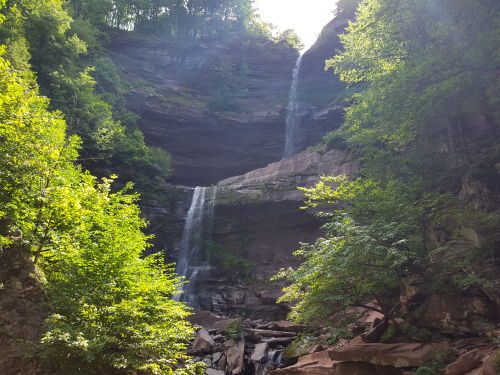
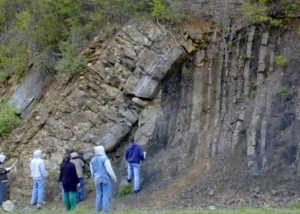 Austin Glen to the right.
Austin Glen to the right.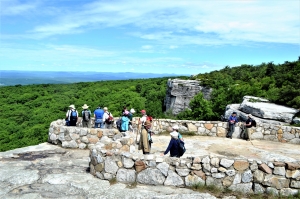
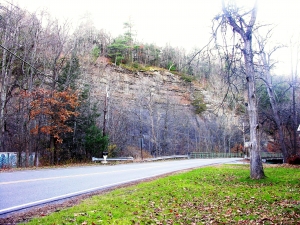
 The Palenville overlook
The Palenville overlook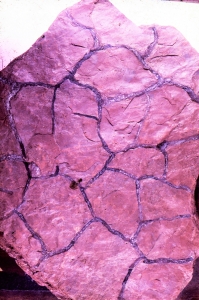
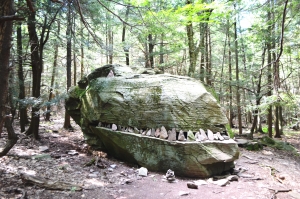 Dinosaur Rock
Dinosaur Rock